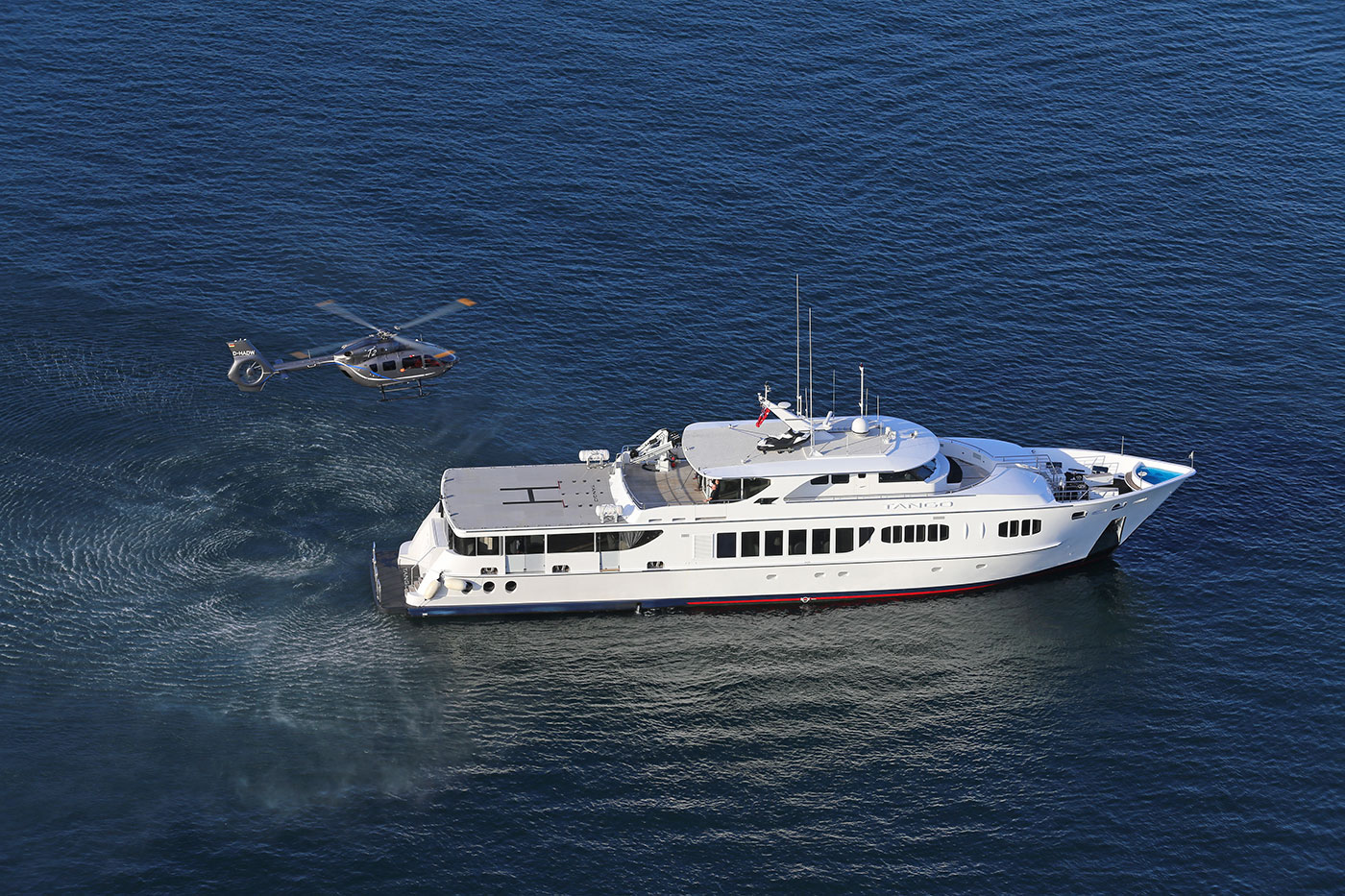A stabilized vessel can be achieved through a number of systems, two such systems being Gyroscopic stabilizers and fin stabilizers (fixed or retractable).
Both are stabilizing mechanisms, but installing a gyro brings with it a host of benefits. Gyros offer reduced drag and higher hull efficiency –and on most yacht installations, selecting a gyro over zero speed fins will result in higher speed, increased range and fuel savings.
Gyros work at all speeds and all weather
Gyros operate across the entire speed range, providing stabilized comfort for your whole journey. Even the best fin systems only work at rest and then at from about 12 knots upwards, leaving you with about half of the speed range to 20 knots where you have almost no stabilization! Then from around 20 knots upwards, the through-water drag of a fin system burns excessive fuel and ultimately limits the top speed of the vessel. In short, carrying the extra weight of a gyro has far less impact on a boat than dragging fins.
VEEM Gyros, being heavy duty in design and having a patented control algorithm, operates in all sea conditions.
Gyros are Safe for Swimmers
Many Captains will not run zero speed fins when guests are swimming in the vicinity of the yacht for safety reasons. This is understandable and responsible, however this compromise between the comfort of those onboard and swimmers is not required with a gyro installation as there are no appendages in the water.
Reduced Drag, Higher Hull Efficiency
On most yacht installations, selecting a gyro over zero speed fins will result in Higher Speed, Increased Range, and Fuel Savings. The trade-off is between the increase in mass between a fin installation and a gyro. The increased mass does represent a hull drag cost, however when compared to the drag of inefficient low aspect ratio zero speed fins (especially if they are actually working), a significant net reduction in drag is achieved.
No Risk of Grounding Damage
We have all experienced or heard stories of stabilizing fins being damaged by collision with floating debris, or grounding. This usually results in time consuming and expensive dry-docking for repair or replacement. This is simply not possible with a gyro stabilizer located inside the hull.
No Fouling with Nets or Cables
The risk of fouling fishing nets, long lines, buoy anchors, or cables is removed completely with a gyro stabilizer located inside the hull.
No Equipment Outside of the Engine Room
By locating the gyro stabilizer(s) in the engine room, noise levels are reduced as compared to fins (most important at night), and there is no requirement for technical personnel to enter the owner’s spaces for operational or maintenance tasks related to fins.
No Dry-Docking for Maintenance, Ever
Dry-docking is a hectic and crammed period, with many systems requiring attention. A VEEM Gyro can be fully maintained (including major over-haul) within the vessel. So, take a few lines off the docking list by selecting a gyro over fins.
Simple Installation –No Need to Run Cables and Piping Through Frame Penetrations
Enough said. Having the gyro delivered as a fully self-contained item of equipment saves a vast amount of time, effort and money coordinating frame penetrations, cable runs and piping runs through the hull.

